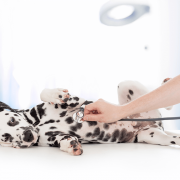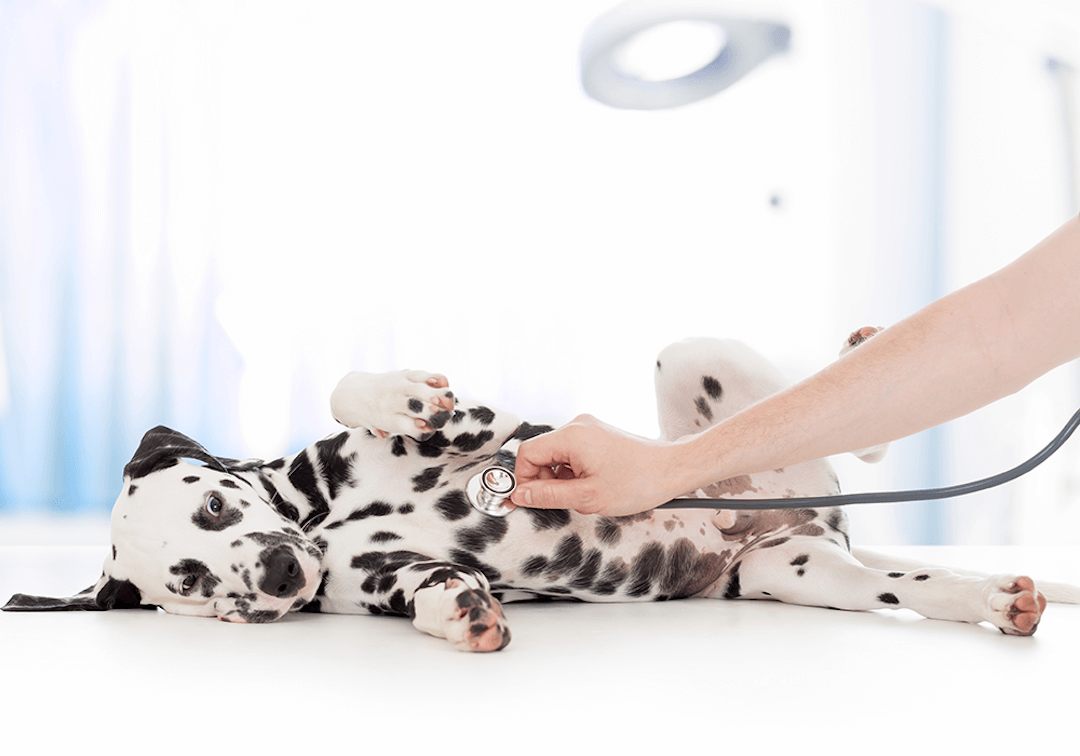TTA or TPLO? Which Surgical Method Is Best for My Dog’s Cruciate Ligament Rupture?
Cranial cruciate ligament disease (CrCLD) is a chronic condition marked by the persistent degradation of a dog’s cranial cruciate ligament. A dog’s cranial cruciate ligament can be compared to a human’s anterior cruciate ligament, as it’s one of the primary ligaments supporting the stifle joint (knee). CrCLD eventually leads to a cruciate tear in a dog, and 50% of dogs with a ruptured ligament will tear the other ligament within the following six to twelve months.
Cranial cruciate ligament disease occurs for several reasons. Certain dog breeds are genetically predisposed to developing the condition, and factors like weight and activity can exacerbate the problem. Early on in the course of the disease, many clinical signs are minor or not noticed at all. When the disease advances or eventually turns into a full tear, a dog will show signs of lameness or suddenly hold up their leg. When the cruciate tears, it’s like a human’s ACL tear in a dog, painful and debilitating. This lameness usually worsens with exercise and seems to improve with rest.
A cranial cruciate rupture in a dog won’t heal on its own, and as a result, most pets require a surgical repair. Several surgical techniques for the condition have been developed including:
- Lateral Fabellar Suture
- Tibial Plateau Leveling Osteotomy (TPLO)
- Tibial Tuberosity Advancement (TTA)
The two most commonly recommend corrective surgeries are the TPLO and TTA procedures.
The Differences Between TPLO and TTA
Tibial Plateau Leveling Osteotomy (TPLO)
The TPLO procedure was developed by Dr. Barclay Slocum in the 1980s. Dr. Slocum noticed that some dogs had an abnormal slope of the knee (tibia), which put added pressure on the ligament and predisposed dogs to developing CrCLD. Instead of fixing the ligament, Dr. Slocum decided it would be better to correct the abnormal slope. His surgical technique resulted in better results than previous surgeries. He patented his technique and the instruments he developed for the surgery, and veterinary surgeons all over the world use his technique today.
The goal of a TPLO surgery is to reduce the angle of the tibia’s slope. Prior to surgery, a veterinary surgeon will measure this angle in order to determine the scope of the surgical slope reduction. During the procedure, the surgeon uses a specially curved saw to make a cut (osteotomy) on the top surface of the tibia. The surgeon then rotates the cut portion of bone to create a more desirable angle. The surgeon will place a stainless-steel bone plate, which holds the two pieces of tibia together, until the osteotomy site heals after about eight to twelve weeks of recovery.
Tibial Tuberosity Advancement (TTA)
This procedure was developed in Zurich, Switzerland in the early 2000s. TTA uses biomechanical principles to adjust the angle of the patellar tendon. This effectively neutralizes the tibial thrust, which occurs when a dog with cranial cruciate ligament disease bears weight on an affected joint.
Prior to surgery, pre-operative measurements will be taken, using stifle radiographs (x-rays of the knee). Pre-operative measurements are used to determine the size of surgical appliances needed for the patient’s procedure. During surgery, the surgeon performs an osteotomy, a cut in the bone. Using an advancement cage and internal fixation device, the surgeon then moves the tibial crest forward from its original position.
How to Decide between TTA and TPLO
Unfortunately, dogs can’t tell us how they feel following a surgery. As a result, deciding which procedure is better for a dog must be based on observational outcomes of both surgical procedures.
Short-Term Considerations
TTA can have a potential advantage over TPLO in the immediate post-operative period, as dogs subjectively sometimes appear to be more comfortable and bear more weight because the TTA involves a less invasive osteotomy or cutting of the bone. Full-weight bearing, however, has been shown to be better with a TPLO at six months of age.
Long-Term Considerations
Again subjectively, some surgeons believe that TPLO is better for more active or athletic dogs. Recently published literature reviews, however, were unable to clearly identify a superior surgical procedure, and studies have shown that TPLO and TTA achieve the same level of function by 12 months after the surgery.
Risk of Potential Complications
Surgery complications aren’t common for either procedure, but according to Dr. Mark Beerenstrauch from Pet Health Hospital, DVM, “Complications can occur with any procedure, and vigilant post-operative exercise restriction, as well as following instructions for recommended rehabilitation and exercises will minimize these risks.”
Some potential complications of TPLO and TTA surgery include the following:
- Post-operative patella luxation
- Tibia fracture
- Implant loosening
- Implant-related infection
Infection of the implant is one of the more common complications associated with these procedures, although implant infection risk is low at 7.4%. If an infection does occur, a dog’s implant would need to be removed. Removal of implants from a TTA surgery can be much more difficult and have a higher risk of bone fracture, compared to the relatively easy removal of a TPLO plate. This is one significant advantage of TPLO over TTA.
Ultimate Procedural Outcomes
Overall, veterinary literature still remains inconclusive regarding the best therapeutic option to treat a cruciate tear in a dog. A dog’s outcome, much like complications, is largely determined by the experience of the surgeon, the quality of post-operative care, and adherence to recommended rehabilitation (dog physical therapy) protocols.
“I tell clients to do the procedure that your surgeon does,” said Dr. Bilicki, DVM, DACVS-SA, Diplomate American College of Veterinary Surgeons (ACVS). “They offer that surgical procedure because they’re good at it, and they like the results they achieve.”
Following either surgery, working with a certified canine rehabilitation specialist will ensure your dog is on the right track to regaining mobility. “While studies have not been able to clearly determine which procedure is superior, it has been demonstrated that both procedures have improved outcomes with post-surgical rehabilitation,” said Dr. Jessica Pizzillo, DVM, CCRP. With dog physical therapy, dogs can achieve the best possible outcomes of TPLO or TTA procedures.









